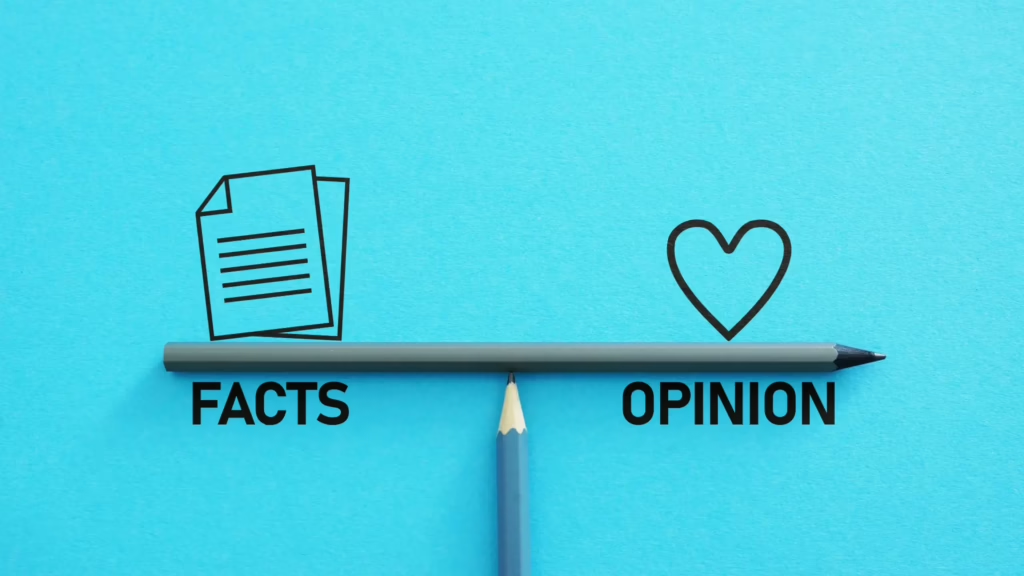We live in an era of instant information and viral content. Digital news outlets and social media platforms have significantly accelerated the speed at which reports – including rumors and breaking news – spread. Once that bull is out of the proverbial pen, it’s difficult to rein it back in.
The digital age has democratized information sharing in many ways, blurring the lines between traditional journalism and content creation. However, the shift doesn’t diminish the need for integrity in what you push out to your followers. If anything, it amplifies it.
Drawing on time-honored journalistic ethics and standards helps you navigate these treacherous waters. You can apply these fundamental principles—accuracy, accountability, fairness, and independence—to content creation across different platforms and mediums. Learning how to recognize sensitive topics, conduct thorough research and fact-checking, and employ empathy in storytelling goes a long way in addressing these challenges.
Handling sensitive topics requires more than following a set of rules. It’s about cultivating a mindset of respect, empathy, and responsibility. You must recognize the power of your words and the impact of your content on real lives and communities.
What makes a topic sensitive?
Sensitive topics are issues that evoke strong emotional responses, challenge deeply held beliefs, or touch on personal experiences that cause discomfort or distress. These subjects often involve complex social, political, or ethical dimensions that are polarizing or controversial. What makes a topic sensitive is its potential to trigger emotional reactions, cause offense, or lead to conflict due to differing perspectives, cultural backgrounds, or personal experiences.
Sensitive topics typically include issues related to:
- Identity and discrimination
- Politics and governance
- Health and well-being
- Violence and trauma
- Socioeconomic inequality
- Environmental crises
- Human rights violations
Discussing sensitive topics can trigger strong emotional responses or resurface past traumas for some people. Mishandling sensitive topics can exacerbate societal divisions and polarization.
As a journalist, I have an ethical responsibility to address sensitive issues through diverse perspectives and recognize the potential consequences of failing to do so. Understanding the nuances of touchy topics allows for constructive discussions and mitigates potential harm to individuals and communities while still addressing important issues that shape society.
The same rule applies to your brand’s content strategy. The last thing you want to do is come off as insensitive to loyal followers.
How does preparation and research help with sensitive topics?
Approaching sensitive topics with integrity requires meticulous preparation and comprehensive research. And by research, I don’t mean finding sources on the Internet that match your preconceived notions about a topic or person.
Conducting research in a journalistic manner ensures accuracy and develops a nuanced understanding of the subject matter. Content creators can navigate complex issues more effectively, minimize the risk of misinformation, and produce content that respects the gravity of sensitive topics by following some simple rules about preparing and researching.
The role of thorough research and fact-checking
Thorough research and rigorous fact-checking are the bedrock of responsible content creation. This is especially true when handling sensitive topics.
We’re living in an age of information overload and rapid news cycles. Sorting fact from fiction can feel overwhelming when you’re in a hurry to get the scoop out before your competitors. I remember what that pressure was like as a reporter. However, it’s never an excuse to report information you can’t verify. Doing so causes more damage to your credibility than is easy to reverse. The more sensitive the topic, the bigger the hit to your reputation if you get it wrong.
Here’s how to get it right.
Practicing balanced reporting
Presenting a comprehensive view of an issue requires acknowledging different sides of the debate. A lot of digital media platforms toss out the promise of balanced reporting. However, they’re not practicing it.
When I was a journalist, one of the hardest topics I ever covered was a Ku Klux Klan rally. The KKK stands for everything I abhor. Yet, I had to put those personal feelings aside to do my job. That meant going to the rally and talking to the people who supported this way of thinking. It also meant approaching the counter-protestors who showed up at the event to make their disdain known.
It was hard sandwiching myself between opposing sides, but in the end, I won a Golden Quill Award for my efforts.
Checking your facts
Facts and opinions aren’t the same. Distinguishing between the two is fundamental in journalism, content creation, and critical thinking.
- Facts are objective and can be verified independently, while opinions are subjective and personal.
- Facts can be proven or disproven, whereas opinions cannot be conclusively proven true or false.
- Facts are generally accepted across different perspectives, while opinions vary.
- Facts rely on evidence and data, while opinions are based on personal preferences and beliefs.
Understanding this distinction helps maintain integrity in content creation and enables audiences to make informed judgments about the information presented. It also protects you from sharing information that might land you in legal hot water later.
Despite what some social media platforms would have us believe, fact-checking is still the cornerstone of handling sensitive topics with integrity. One of my favorite fact-checking tools is a new service called Factual. If you need help sorting fact from opinion before you run with it, I highly recommend checking out Factual.
Avoiding oversimplification
As reporters, we’re told to keep our copy as simple as possible to increase readership and understanding. However, you can take this method too far if you fail to recognize the complexity of some sensitive topics. When we try to generalize statements, we risk reducing them to binary arguments.
Most delicate issues don’t fall into an either-or scenario. Failing to recognize the shades of gray can prevent people on both sides from reaching a compromise.
Identifying potential blind spots
Identifying potential blind spots when handling sensitive topics is crucial for developing a comprehensive understanding and creating balanced content. This process involves uncovering aspects of the topic that might not be immediately apparent from a single perspective.
Let’s say you’re creating content around the ethics of artificial intelligence (AI). When discussing AI development, a potential blind spot might be concentrating too heavily on the technological advancements and benefits while overlooking the potential job losses and privacy concerns.
You can uncover these blind spots by:
- Consulting diverse sources and subject matter experts
- Engaging with communities directly affected by AI
Doing so will help content creators produce more nuanced, comprehensive, and responsible coverage of delicate topics.
Check your personal biases at the door
Self-awareness is a critical part of handling sensitive topics with integrity. You’re fooling yourself if you think that you don’t have personal biases. It’s just human nature. The trick is learning how to acknowledge your beliefs, experiences, and potential prejudices to prevent them from influencing your approach to a topic.
Here’s how:
- Regularly question your preconceptions and be open to challenging your views based on new information.
- Engage with colleagues, mentors, or diverse focus groups to identify potential blind spots in your understanding or presentation of a topic.
- Approach unfamiliar cultural contexts with respect and a willingness to learn.
- Commit to continuous learning about issues of bias, diversity, and inclusion in content creation.
What are some ethical considerations when handling sensitive topics?
Ethical considerations aren’t just for journalists. Anyone who fancies themselves a content creator and shares their work publicly must keep three ethical considerations in mind to protect themselves and build credibility with their target audience.
One of the most important journalistic principles that applies in covering sensitive topics with integrity is called the limitation of harm. A cornerstone of ethical journalism, this principle posits that while reporting the truth is paramount, journalists have a responsibility to minimize the potential harm that may result from their reporting.
In today’s modern language, we can call that the “just because you can, doesn’t mean you should” rule. Having access to information isn’t the same as having a duty to share it. Reporters face this conundrum frequently. For instance, we might withhold certain gruesome details of a murder that don’t add substantial value to the story but could cause distress to the victim’s family.
To apply this principle, ask yourself the following:
- Is this content likely to cause direct harm to individuals or groups?
- Does public interest outweigh potential negative consequences?
- Have I taken steps to protect vulnerable sources or subjects?
- Could this content inspire copycat behavior or exacerbate existing problems?
- Am I using inclusive and respectful language to avoid perpetuating harmful stereotypes?
- Have I provided adequate context to prevent misinterpretation or unintended harm?
- Am I respecting personal privacy while still serving the public interest?
- Could this content disproportionately impact marginalized communities?
- Have I considered the potential long-term societal impacts of publishing this information?
- Is there a way to present this information that minimizes harm without compromising the essential message?
The importance of avoiding discrimination and stereotyping
Responsible content creation requires a conscious effort to avoid perpetuating harmful stereotypes or discriminatory attitudes.
Let’s take a common example to illustrate the point. Implying causation between race and criminal behavior instead of providing context about socioeconomic factors and systemic issues that can contribute to higher crime rates in certain communities is not interpreting crime statistics with integrity.
You can avoid falling into a pattern of discrimination and stereotyping by:
- Recognizing and challenging your personal biases
- Using inclusive and respectful language
- Providing diverse perspectives and representation
- Avoiding generalizations about groups or communities
- Contextualizing stories to prevent misinterpretation
Ethical content creation is not about avoiding difficult subjects. It’s about handling them with care, respect, and a commitment to truth and fairness. Content creators can approach sensitive topics with greater integrity, fostering trust with their audience and contributing to a more responsible media landscape when they commit to following these ethical considerations.
How do you practice empathy and compassion in content creation?
Empathy and compassion are more than ethical imperatives when dealing with sensitive topics. They’re essential communication tools. These qualities allow content creators to connect with their subjects and target audiences on a deeper level to build trust and credibility.
Empathetic reporting extends beyond simply stating the facts. It involves recognizing and respecting the human experience at the heart of every story. I’ve always believed that everyone has a story to tell. It simply takes a compassionate, empathetic, and patient person to uncover it.
Approaching sensitive topics—and the people who can talk about them— this way builds bridges of understanding, gives a voice to the voiceless, and sheds light on important issues without causing unnecessary harm or distress.
Strategies for interviewing vulnerable individuals
Learning how to appropriately use empathetic language and tone can mean the difference between getting people to talk about sensitive topics or shutting down. People aren’t just something that happened to them or something they know. Approaching someone as nothing more than a means of getting the information you want without regard for their welfare is a recipe for failure.
Interviewing vulnerable individuals requires a delicate balance of gathering the necessary information and respecting the interviewee’s emotional well-being. Here’s how you do it:
- Obtain informed consent. Clearly explain the purpose of the interview and how you’ll use the information.
- Choose an appropriate setting. Hold the interview in a safe, comfortable space where the interviewee feels most at ease.
- Allow control. Give the interview subject control over the pace and direction of the interview, including the option to take breaks, not answer specific questions, or stop altogether.
- Use trauma-informed interview techniques. Be aware of potential triggers and approach sensitive topics gradually.
- Practice active listening. Show genuine interest and empathy through body language and verbal responses.
- Respect boundaries. Never push for information the interviewee is uncomfortable providing. It’s the quickest way to destroy trust.
One of the most difficult interviews I ever conducted was with a veteran who spent time as a POW in WWII. He had never talked to another person besides his therapist about his experiences. What made him willing to share what were some of the most traumatic times of his life with a reporter he didn’t even know?
I took the time to make him comfortable with me before diving right into the heart of our conversation. I asked him about his family, his hobbies, and all the things that made him who he was outside of that moment in time when he was held captive by the Germans. I made it clear that at any time if he didn’t want to talk about it or answer a specific question I wouldn’t pressure him. The result was the story of a lifetime, and I am forever grateful to him for sharing it with me.
Cultural sensitivity and awareness
Cultural sensitivity and awareness keep your reporting respectful, accurate, and free from harmful stereotypes or misrepresentations. Researching the cultural background and customs of communities you’re creating content about is a must.
Following the events of 9/11, I was designated the official Islam expert on my reporting staff for no other reason than one of my sources at a local college was a Kurdish immigrant from Iraq. Given the volatile nature of reporting after the terrorist attacks, I knew I had to approach him with care and compassion unless I wanted to damage the working relationship.
Here’s how I did it.
- I sought diverse perspectives. Subject matter experts have their place. Just don’t forget to include voices from within the community consuming your content. My contact, once he trusted me, put me in touch with friends and family within Afghanistan and Iraq who willingly shared their stories.
- I recognized the power dynamics. Know your position and potential biases when interacting with different cultural groups. Muslim hate was rampant after 9/11. To protect themselves, most Muslims in the community assumed they were blamed for what had transpired and approached all interactions with those outside their culture with caution. I had to check my biases at the door to make the most of our time together.
- I used appropriate terminology. Learn and use the preferred terms and names for cultural groups and practices. There’s no shame in asking a person from the culture to provide the information. Believe me, when I say they’d rather you ask then get it all wrong.
- I avoided generalizations. Recognize there’s diversity within cultural groups and avoid broad stereotypes. At a time when too many people were eager to point fingers at all Muslims in America for the events of 9/11, I went the extra mile to avoid labeling every Muslim person a terrorist.
- I considered cultural context. Understand how cultural factors may influence people’s actions, beliefs, and responses to specific events. Listening to how my source grew up in Iraq and taking the time to learn about his religious beliefs opened the door to more insightful reporting.
How do you balance transparency and accountability?
Transparency and accountability are foundational principles that uphold the integrity of your content creation work and foster trust with the audience. These principles are more than ethical imperatives. They’re crucial for maintaining credibility in an era of information overload and widespread skepticism.
Transparency involves being open about the processes, sources, and methods used in gathering and presenting information. It allows the audience to understand how conclusions were reached and to evaluate the reliability of the content for themselves. Accountability, on the other hand, involves taking responsibility for the content produced, acknowledging errors when they occur, and being open to feedback and correction.
Together, these principles create a framework for ethical and responsible content creation that can withstand scrutiny and build lasting relationships with audiences.
Disclosing sources and methods
Disclosing sources and methods is a critical aspect of transparency in content creation. It allows the audience to assess the credibility of the information presented and understand the context in which it was obtained.
Here’s how to do it the right way:
- Build credibility. Revealing sources (when safe and ethical to do so), demonstrates that your information comes from reliable places.
- Enable fact-checking. Disclosure allows others to verify the information independently, enhancing the overall accuracy of public discourse.
- Contextualize information. Explaining methods helps the audience understand how conclusions were reached and any limitations of the data or analysis.
- Protect anonymous sources responsibly. When anonymity is necessary, explain why and provide as much context as possible without compromising the source’s safety.
- Be clear about limitations. If certain information couldn’t be verified or if there are gaps in the data, acknowledge this openly.
- Use attribution consistently. Develop a clear system for attributing information to sources and use it consistently throughout your work.
Transparency builds trust
Transparency is a powerful tool for building and maintaining trust with your audience. Being open about your processes demonstrates integrity. It shows you have nothing to hide and are committed to ethical content creation.
We live in an era of fake news. AI is getting better at creating images and videos that can be manipulated to support certain narratives. Transparency about the process sets credible content apart from unreliable sources.
Lastly, when your audience trusts you, they’re more likely to engage constructively with your content.
Accountability in content creation
Sometimes, even when you follow ethical guidelines, you may still make a mistake with your content. The most effective way to handle that kind of situation is to take responsibility for it by acknowledging the error and correcting it promptly.
Quickly acknowledging and correcting errors demonstrates your commitment to accuracy. It lets your readers know you’re open to criticism and questions and will use any errors to improve your process to prevent similar issues moving forward.
Upholding integrity in content creation
Handling sensitive topics with integrity is a cornerstone of responsible content creation. Adhering to ethical principles and proven journalism techniques helps you navigate challenging subjects while maintaining trust and respect.
Integrity in content creation is about more than following the rules laid out above. It’s about fostering a culture of responsibility and trust. As content creators, we have the power to shape narratives and influence public discourse. Let’s wield that power wisely, always striving to inform, enlighten, and uplift our audiences, even when tackling the most difficult topics.
Committing to these principles protects our integrity and contributes to a more informed, empathetic, and just society. The path may not always be easy, but it’s worth the journey.




